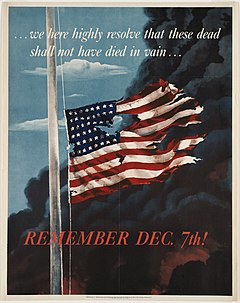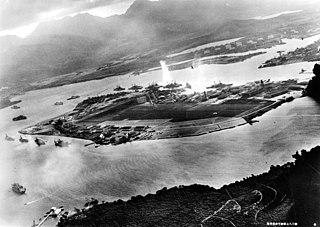
The attack on Pearl Harbor was a surprise military strike by the Imperial Japanese Navy Air Service upon the United States against the U.S. Naval base at Pearl Harbor in Honolulu, Hawaii, just before 8:00 a.m. on Sunday, December 7, 1941. The United States was a neutral country at the time; the attack led the U.S. to formally enter World War II on the side of the Allies the following day. The Japanese military leadership referred to the attack as the Hawaii Operation and Operation AI, and as Operation Z during its planning.

Husband Edward Kimmel was a United States Navy four-star admiral who was the commander in chief of the United States Pacific Fleet (CINCPACFLT) during the Japanese attack on Pearl Harbor. He was removed from that command after the attack, in December 1941, and was reverted to his permanent two-star rank of rear admiral due to no longer holding a four-star assignment. He retired from the Navy in early 1942. The United States Senate voted to restore Kimmel's permanent rank to four stars in 1999, but President Clinton did not act on the resolution, and neither have any of his successors.

USS Arizona was a battleship built for the United States Navy in the mid-1910s. Named in honor of the 48th state, she was the second and last ship in the Pennsylvania class. After being commissioned in 1916, Arizona remained stateside during World War I but escorted President Woodrow Wilson to the subsequent Paris Peace Conference. The ship was deployed abroad again in 1919 to represent American interests during the Greco-Turkish War. Two years later, she was transferred to the Pacific Fleet, under which the ship would remain for the rest of her career.

USS Utah (BB-31/AG-16) was the second and final member of the Florida class of dreadnought battleships. The first ship of the United States Navy named after the state of Utah, she had one sister ship, Florida. Utah was built by the New York Shipbuilding Corporation, laid down in March 1909 and launched in December of that year. She was completed in August 1911, and was armed with a main battery of ten 12-inch (305 mm) guns in five twin gun turrets.

USS Bowfin (SS/AGSS-287), is a Balao-class submarine of the United States Navy named for the bowfin fish. Since 1981, she has been open to public tours at the USS Bowfin Submarine Museum & Park in Pearl Harbor, Hawaii, next to the USS Arizona Memorial Visitor Center.
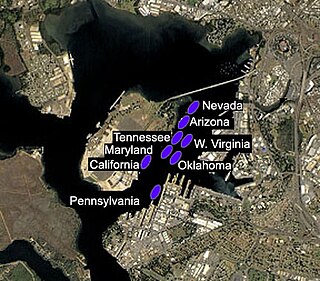
Battleship Row was the grouping of seven U.S. battleships in port at Pearl Harbor, Hawaii, when the Japanese attacked on 7 December 1941. These ships bore the brunt of the Japanese assault. They were moored next to Ford Island when the attack commenced. The ships were Arizona, California, Maryland, Nevada, Oklahoma, Tennessee, and West Virginia. A repair ship, Vestal, was also present, moored next to Arizona.

Isaac Campbell Kidd was a rear admiral in the United States Navy. He was the father of Admiral Isaac C. Kidd, Jr. Kidd was killed on the bridge of USS Arizona during the Japanese attack on Pearl Harbor. The highest ranking casualty at Pearl Harbor, he became the first U.S. Navy flag officer killed in action in World War II as well as the first killed in action against any foreign enemy.

The USS Arizona Memorial, at Pearl Harbor in Honolulu, Hawaii, marks the resting place of 1,102 of the 1,177 sailors and Marines killed on USS Arizona during the attack on Pearl Harbor on December 7, 1941, and commemorates the events of that day. The attack on Pearl Harbor led to the United States' involvement in World War II.

The Pearl Harbor Naval Shipyard and Intermediate Maintenance Facility is a United States Navy shipyard located in Pearl Harbor, Hawaii on 148 acres. It is one of just four public shipyards operated by the United States Navy. The shipyard is physically a part of Joint Base Pearl Harbor–Hickam.
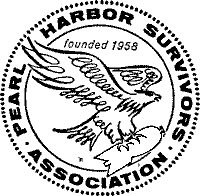
The Pearl Harbor Survivors Association (PHSA), founded in 1958 and recognized by the United States Congress in 1985, was a World War II veterans organization whose members were on Pearl Harbor or three miles or less offshore during the Japanese attack on Pearl Harbor, on December 7, 1941. The PHSA was officially disbanded at the end of December 2011 with a membership of about 2,700 members nationally.
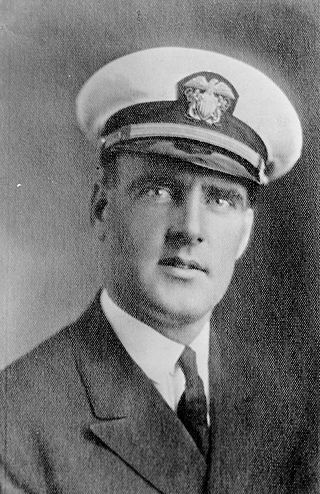
Edwin Joseph Hill, was a United States Navy sailor who was stationed on the USS Nevada (BB-36) during the attack on Pearl Harbor, Hawaii, on December 7, 1941. He posthumously received the Medal of Honor for his actions during the battle.
The Pacific War is a series of alternate history novels written by Newt Gingrich and William R. Forstchen with Albert S. Hanser. The series deals with the Pacific War between the United States of America and the Empire of Japan. The point of divergence is the decision of Admiral Isoroku Yamamoto, commander-in-chief of the Japanese Combined Fleet, to take personal command of the 1st Air Fleet for the attack on Pearl Harbor, rather than delegate it to Adm. Chūichi Nagumo.
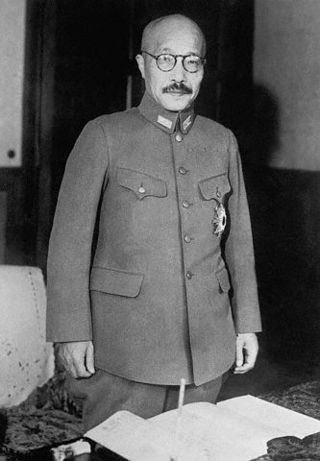
Japan's attack on Pearl Harbor took place on December 7, 1941. The United States military suffered 19 ships damaged or sunk, and 2,403 people were killed. Its most significant consequence was the entrance of the United States into World War II. The US had previously been officially neutral but subsequently entered the Pacific War, and after Italy's declaration of war and Germany's declaration of war shortly after the attack, the Battle of the Atlantic and the European theatre of war. Following the attack, the US interned 120,000 Japanese Americans, 11,000 German Americans, and 3,000 Italian Americans.

Naval Station Pearl Harbor is a United States naval base on the island of Oahu, Hawaii. In 2010, as part of the recommendations of the Base Realignment and Closure (BRAC) commission, the naval station was consolidated with the United States Air Force's Hickam Air Force Base to form Joint Base Pearl Harbor–Hickam. Since 1940, Pearl Harbor has been the headquarters of the United States Pacific Fleet.

Ford Island is an islet in the center of Pearl Harbor, Oahu, in the U.S. state of Hawaii. It has been known as Rabbit Island, Marín's Island, and Little Goats Island; its native Hawaiian name is Mokuʻumeʻume. The island had an area of 334 acres (135 ha) when it was surveyed in 1825, which was increased during the 1930s to 441 acres (178 ha) with fill dredged out of Pearl Harbor by the United States Navy to deepen the harbor.

Salvaged artifacts from the USS Arizona, a battleship that was catastrophically sunk during the 1941 attack on Pearl Harbor, are displayed in several locations around the United States.

The attack on Pearl Harbor has received substantial attention in popular culture in multiple media and cultural formats including film, architecture, memorial statues, non-fiction writing, historical writing, and historical fiction. Today, the USS Arizona Memorial on the island of Oahu honors the dead. Visitors to the memorial reach it via boats from the naval base at Pearl Harbor. The memorial was designed by Alfred Preis, and has a sagging center but strong and vigorous ends, expressing "initial defeat and ultimate victory". It commemorates all lives lost on December 7, 1941.

The Submarine Memorial Chapel is a military chapel onboard Joint Base Pearl Harbor–Hickam, Hawaii, United States. Dedicated in 1944, it is the oldest chapel at Pearl Harbor, built in remembrance of all the submariners who died in World War II. It ceased hosting religious worship services sometime in the 2000s, but regular religious services were re-established by a congregation at the chapel in 2015.
